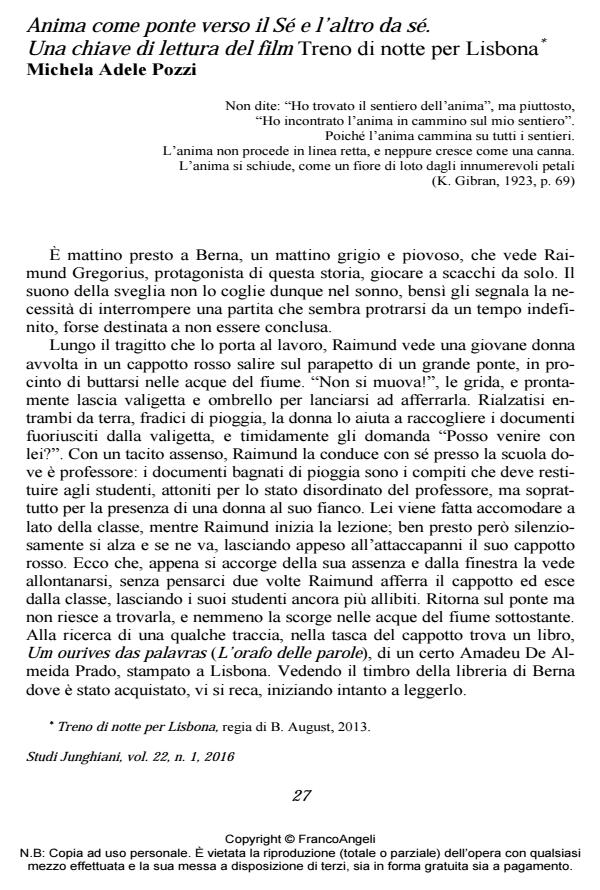Soul as a bridge to the self and the other. A possible reading of the film Night Train to Lisbon
Journal title STUDI JUNGHIANI
Author/s Michela Adele Pozzi
Publishing Year 2016 Issue 2016/43
Language Italian Pages 16 P. 27-42 File size 196 KB
DOI 10.3280/JUN2016-043002
DOI is like a bar code for intellectual property: to have more infomation
click here
Below, you can see the article first page
If you want to buy this article in PDF format, you can do it, following the instructions to buy download credits

FrancoAngeli is member of Publishers International Linking Association, Inc (PILA), a not-for-profit association which run the CrossRef service enabling links to and from online scholarly content.
The Author presents some reflections about Anima as a bridge to the relationship with the Self and the other, a function proposed as a reading key of the movie Night Train to Lisbon (B. August, 2013). Raimund Gregoius, the main character, at the beginning appears to be identified with the perspective of the Ego complex, but an unexpected meeting will be the starting point of a real and symbolic journey led by Anima, the vital function which his life was completely depleted of. Anima will be embodied by people, histories and situations and will mediate the gradual discovery of Raimund’s psychic parts and functions previously silent, thus allowing the reactivation of the dialectic between opposites and of his individuation process.
Keywords: Anima, individuation, bridge, myth biography, Self, relationship
Michela Adele Pozzi, Anima come ponte verso il Sé e l’altro da sé. Una chiave di lettura del film Treno di notte per Lisbona in "STUDI JUNGHIANI" 43/2016, pp 27-42, DOI: 10.3280/JUN2016-043002